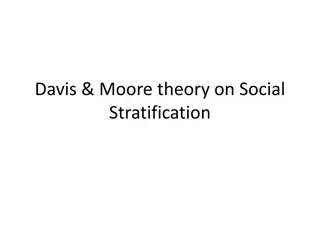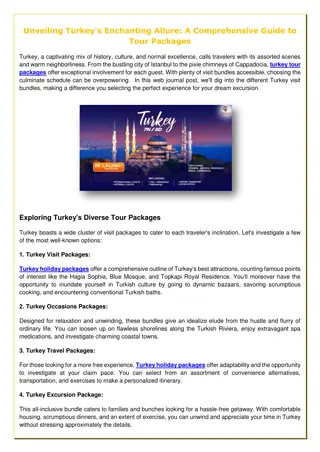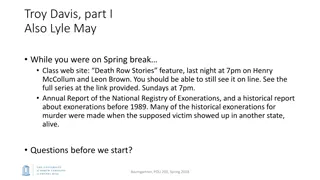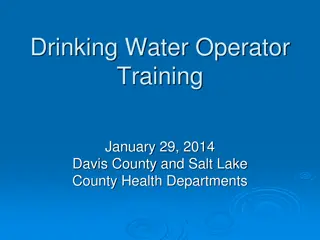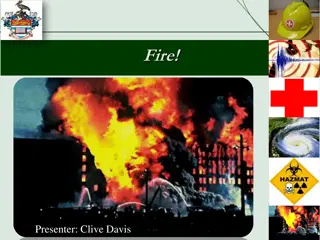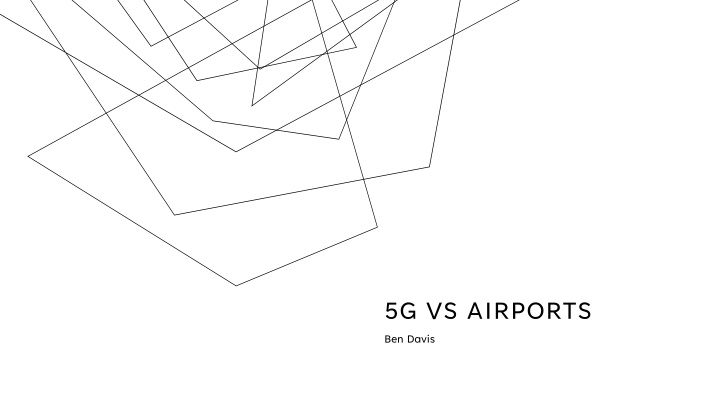
5G vs Aircraft Altitudes and Radar Applications Overview
Explore the impact of 5G on aircraft altimeters, Verizon's C Band operations, and the history of radar in weather monitoring. Learn how the FCC mandated upgrades to modern altimeters and how radar technology has evolved over the years.
Download Presentation

Please find below an Image/Link to download the presentation.
The content on the website is provided AS IS for your information and personal use only. It may not be sold, licensed, or shared on other websites without obtaining consent from the author. If you encounter any issues during the download, it is possible that the publisher has removed the file from their server.
You are allowed to download the files provided on this website for personal or commercial use, subject to the condition that they are used lawfully. All files are the property of their respective owners.
The content on the website is provided AS IS for your information and personal use only. It may not be sold, licensed, or shared on other websites without obtaining consent from the author.
E N D
Presentation Transcript
5G VS AIRPORTS Ben Davis
INTRODUCTION Cell phone companies desire to expand the capacity of cell phone networks. The introduction of 5G expands both computing efficiency and spectrum, both of which allow more data to be transmitted at a faster rate. However, the expansion of spectrum has introduced concerns with aircraft altimeters. 2
DEFINITIONS S Band (IEEE) 2-4 GHz C Band (IEEE) 4-8 GHz C Band (FCC) 3.7-4.2 GHz Verizon s portion of C Band (FCC) 3.7-3.98 GHz 3
HISTORY OF C BAND (FCC) In the 1970s, 3.7 - 4.2 GHz was primarily used for satellite TV. Since it required antennas approximately 10 feet in diameter, it has declined in usage as other, more economical means have arisen. The spectrum of 3.70-3.98 GHz was auctioned off by the FCC in 2021 to Verizon. 4
THE PROBLEM Aircraft altimeters operate from 4.2-4.4 GHz. If the entire spectrum of 3.7-4.2 GHz was allowed for cell phone use, with towers near airports, it introduces risk to aircraft safety equipment when in use near or on airplanes, especially when using 4.1-4.2 GHz. Multiple aircraft companies, including Boeing, and the FAA addressed concerns over this during the inception and introduction of 5G.1 1 Comments of The Boeing Company, GN Docket No. 18-122, et al, (Dec. 11, 2018) 5
THE RESULT The FCC mandated by July 1, 2023 all aircraft have modern altimeters which are not limited by Verizon C Band operations up to 3.98 GHz. In September 2023, all aircraft in the US were upgraded.2 Verizon is currently expanding C Band operations. 2 5G and Aviation Safety, Federal Aviation Administration, 24 October 2023, https://www.faa.gov/5g#:~:text=July%201%2C%202023%2C%20new%20legislation,the%20use%20of%20unequipped%20planes. 6
RADAR IN WEATHER APPLICATIONS Ben Davis
HISTORY Radar in weather monitoring began shortly after WW2 Second radar to be used for weather monitor was in Wichita, KS in 19471 Doppler radar started being used in the 1990s Dual-polarization (dual-pol) began being used in 20112 1 NWS Wichita History, National Weather Service, https://www.weather.gov/ict/history 2 Dual-polarization radar: Stepping stones to building a Weather-Ready Nation, National Weather Service, April 25, 2013, https://www.weather.gov/news/130425- dualpol#:~:text=The%20first%20operational%20radar%20upgraded,has%20upgraded%20151%20operational%20radars. 8
HISTORY Radar in weather monitoring began shortly after WW2 Second radar to be used for weather monitor was in Wichita, KS in 19471 Doppler radar started being used in the 1990s Dual-polarization (dual-pol) began being used in 20112 1 NWS Wichita History, National Weather Service, https://www.weather.gov/ict/history 2 Dual-polarization radar: Stepping stones to building a Weather-Ready Nation, National Weather Service, April 25, 2013, https://www.weather.gov/news/130425- dualpol#:~:text=The%20first%20operational%20radar%20upgraded,has%20upgraded%20151%20operational%20radars. 9
BENEFITS OF DUAL-POLARIZATION Traditional Doppler radar provides base reflectivity, base velocity, and spectrum width Dual-pol adds 3 features: differential reflectivity (ZDR), correlation coefficient (CC), and specific differential phase (KDP)3 3 Dual Polarization Radar, National Weather Service, https://www.weather.gov/bmx/radar_dualpol#:~:text=Dual%2Dpolarimetric%20radar%20transmits%20and,shape%2C%20and%20vari ety%20of%20targets. 10
Dual-Pol Applications, National Weather Service, https://www.weather.gov/jan/dualpolupgrade-applications 11




